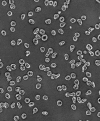Clinical development of placental malaria vaccines and immunoassays harmonization: a workshop report
- PMID: 27639691
- PMCID: PMC5027113
- DOI: 10.1186/s12936-016-1527-8
Clinical development of placental malaria vaccines and immunoassays harmonization: a workshop report
Abstract
Placental malaria caused by Plasmodium falciparum infection constitutes a major health problem manifesting as severe disease and anaemia in the mother, impaired fetal development, low birth weight or spontaneous abortion. Prevention of placental malaria currently relies on two key strategies that are losing efficacy due to spread of resistance: long-lasting insecticide-treated nets and intermittent preventive treatment during pregnancy. A placental malaria vaccine would be an attractive, cost-effective complement to the existing control tools. Two placental malaria vaccine candidates are currently in Phase Ia/b clinical trials. During two workshops hosted by the European Vaccine Initiative, one in Paris in April 2014 and the other in Brussels in November 2014, the main actors in placental malaria vaccine research discussed the harmonization of clinical development plans and of the immunoassays with a goal to define standards that will allow comparative assessment of different placental malaria vaccine candidates. The recommendations of these workshops should guide researchers and clinicians in the further development of placental malaria vaccines.
Keywords: Clinical trial; Harmonization; Immunoassays; Placental malaria; Vaccine development.
Figures
References
Publication types
MeSH terms
Substances
LinkOut - more resources
Full Text Sources
Other Literature Sources
Miscellaneous


